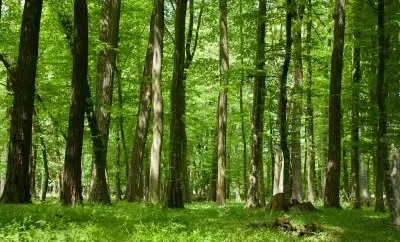Research Breakthrough: Methane-Absorbing Microbes in Tree Bark
Trees have long been recognised for their role in improving the climate by removing carbon dioxide from the atmosphere. Recent research, however, has unveiled an unexpected additional benefit. Microbes residing within tree bark have been found to absorb methane, a potent greenhouse gas, from the atmosphere.
Traditionally, it was believed that soil was the sole terrestrial sink for methane, with soil bacteria capable of absorbing and breaking down the gas to use as an energy source.
This discovery is promising for addressing the issue of methane, a significant contributor to greenhouse gases, and reducing its harmful levels.
The following article will explore the nature of methane, its natural benefits, the challenges posed by human-generated methane, current methane levels, ongoing efforts to address the methane and greenhouse gas issue, and the significance of this research into methane absorption by trees.
Understanding Methane: A Natural Gas
Methane is a gas that occurs naturally in the environment. It is found both underground and beneath the seafloor, formed through geological and biological processes. Approximately 40% of all methane is produced by natural sources.
Methane's impact on the environment is significant. It contributes to the greenhouse effect, a natural process essential for maintaining Earth's temperature. Without the greenhouse effect, the planet's average temperature would drop below freezing, making it uninhabitable.
Understanding Methane's Impact on Global Warming
Methane is a significant greenhouse gas, playing a major role in the current climate crisis. Naturally occurring methane contributes to atmospheric levels, but human activities have pushed these levels far beyond what is needed to maintain a stable climate. Methane is especially potent, over 28 times more effective than carbon dioxide at trapping atmospheric heat.
Since preindustrial times, methane has accounted for about 30% of global warming. Emissions are increasing at their fastest rate since the 1980s. The United Nations' Intergovernmental Panel on Climate Change (IPCC) reports that nearly half of the 1.1°C rise in global temperatures can be linked to methane.
In the UK, methane comprised 14% of total greenhouse gas emissions in 2022, with agriculture, waste management, and fuel supply being the main contributors.
Global Commitments to Address Methane Emissions
Governments and NGOs have made numerous national and international pledges to address this problem.
A recent example is the Global Methane Pledge, launched in 2021 at the COP26 climate summit. In 2022, the UK joined the Global Methane Pledge, committing to a collective goal of reducing global methane emissions by at least 30% by 2030 compared to 2020 levels.
Despite these ambitious pledges, it is important to note that methane levels in 2020 were the highest recorded since scientists began systematic annual measurements in 1983.
Why This Research and Discovery is Important
Led by Professor Vincent Gauci from the University of Birmingham, a research team conducted an in-depth investigation into methane absorption levels across the three primary forest types. The study examined upland tropical forests in the Amazon and Panama, temperate broadleaf trees in Wytham Woods in Oxfordshire, UK, and boreal coniferous forest trees in Sweden.
The team discovered that microbes residing within tree bark can absorb atmospheric methane. The findings suggest that upland trees can be a net sink for atmospheric methane.
To sum up
The recent discovery that microbes within tree bark can absorb methane offers a promising avenue for mitigating the impact of this potent greenhouse gas. Methane significantly contributes to global warming, and this research underscores the importance of trees in reducing methane, enhancing their role in combating climate change.
Planting more trees and reducing deforestation across the UK is important in reducing methane and other greenhouse gases. Supporting initiatives such as Protect Earth through donations to the Land Fund or purchasing trees and hedges for planting in upcoming UK projects can contribute significantly to these efforts.




